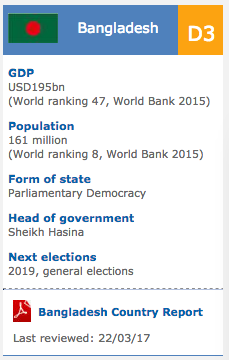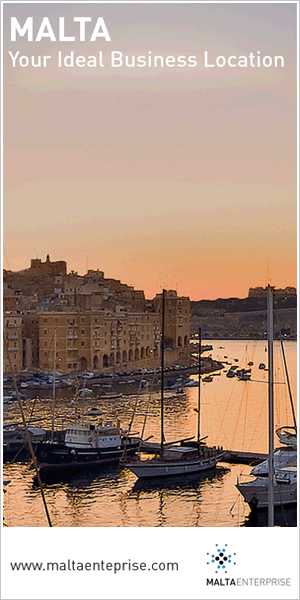Belgium: Belgium Art / Culture Profile 2012
2012/02/22
Belgium Art / Culture Profile 2012
 A discussion of Belgian culture requires discussing both those aspects of cultural life shared by 'all' or most of the Belgians, regardless of what language they speak, and also, the differences between the main cultural communities, the Flemish people from Flanders and Brussels and the French-speakers from Brussels and Wallonia.
A discussion of Belgian culture requires discussing both those aspects of cultural life shared by 'all' or most of the Belgians, regardless of what language they speak, and also, the differences between the main cultural communities, the Flemish people from Flanders and Brussels and the French-speakers from Brussels and Wallonia.
Most Belgians tend to view their culture as an integral part of European culture or Western culture; nevertheless, both main communities tend to make their thousands of individual and collective cultural choices mainly from within their own community, and then, when going beyond, the Flemish draw intensively from both the English-speaking culture (which dominates sciences, professional life and most news media) and French and other Latin cultures, whereas French-speakers focus on cultural life in Paris and elsewhere in the French-speaking world (la Francophonie), and less outside. A truly scientific discussion would also include discussion of the different cultures of Belgian ethnic minorities such as the Jews who have formed a remarkable component of Flemish culture - in particular that of Antwerp for over five hundred years.
Museums
Some of the most impressive museums in Belgium are The Royal Museum for Fine Arts, in Antwerp, which has an admirable collection of works by Peter Paul Rubens, the Groeningemuseum, in Bruges, with the Flemish Primitives, and the Royal Museums of Fine Arts of Belgium in Brussels, which has a cinema, a concert hall, and artworks of many periods, including a large René Magritte collection.
Furthermore, the Plantin-Moretus Museum in Antwerp, a world heritage site, is the complete factory of the largest publishing house of the seventeenth century.
Literature
 Belgian literature was more cohesive in the past but is now divided between a Flemish literature and a Belgian Francophone literature. Until the mid-XXth century, Belgian writers more often wrote in French even if they were Flemish, due both to the then-dominant position of that language in worldwide culture and its dominant position within Belgium itself (e.g. Suzanne Lilar, Emile Verhaeren or Maurice Maeterlinck), and many French-speaking individuals come from originally Dutch-speaking families (particularly in Brussels, e.g. Jacques Brel). As the Flemish movement grew in importance, Dutch-penned authors became more and more prominent in Flanders and even played an important role in the said movement - see for example Hendrik Conscience. Important contemporary Flemish authors are Tom Lanoye or Dimitri Verhulst.
Belgian literature was more cohesive in the past but is now divided between a Flemish literature and a Belgian Francophone literature. Until the mid-XXth century, Belgian writers more often wrote in French even if they were Flemish, due both to the then-dominant position of that language in worldwide culture and its dominant position within Belgium itself (e.g. Suzanne Lilar, Emile Verhaeren or Maurice Maeterlinck), and many French-speaking individuals come from originally Dutch-speaking families (particularly in Brussels, e.g. Jacques Brel). As the Flemish movement grew in importance, Dutch-penned authors became more and more prominent in Flanders and even played an important role in the said movement - see for example Hendrik Conscience. Important contemporary Flemish authors are Tom Lanoye or Dimitri Verhulst.
Belgian Francophone literature is sometimes difficult to distinct from French literature as a whole, because several great French authors went to Belgium for refuge (e.g. Apollinaire, Baudelaire, Rimbaud, Verlaine and recent tax-refugee Eric-Emmanuel Schmitt) and conversely, top French-speaking writers sometimes settle in Paris (e.g. Simenon, Amélie Nothomb). Belgian Francophone literature is characterized by authors who achieved a nationwide success in Belgium while being little known in France, and shares traits that are perceived as typically Belgian : use of black humour, self-derision, surrealism and absurdism (in a similar vein as Belgian painters such as René Magritte), and references to Belgian history and society (such as Belgian royalty, language conflicts, former colony of Congo, Belgian beers and gastronomy, and whatever is typically Belgian) and they are often active in Belgian medias as columnists or entertainers. Such authors are Thomas Gunzig, Juan d'Oultremont, Jacques Mercier, etc.
There have also been writers in the Walloon language, such as Nicolas Defrecheux and Edouard Remouchamps.
Most famous Belgian authors are : Guido Gezelle (1830–1899), Emile Verhaeren (1855–1916), Max Elskamp (1862–1931), Maurice Maeterlinck (1862–1949), Paul van Ostaijen (1896–1926), Henri Michaux (French born and educated in Belgium, 1899–1984) and Jacques Brel (1929–1978) and prose writers: Hendrik Conscience (1812–1883), Charles de Coster (1827–1879), Willem Elsschot (1882–1960), Michel de Ghelderode (1898–1962), Georges Simenon 1903-1989, Louis Paul Boon (1912–1979), Hugo Claus ( 1929–2008 ), Pierre Mertens (born in 1939) Ernest Claes (1885–1968), and, Amélie Nothomb (born in 1967).
Architecture
The romanesque Collégiale Saint-Gertrude de Nivelles (1046) and Cathédrale Notre-Dame de Tournai, gothic 15th-century Cathedral of Our Lady in Antwerp and baroque Brussels Grand'Place. Mosan Renaissance style is typical of the architecture within the Prince-Bishopric of Liège. Famous Art Nouveau architects Victor Horta and Henry van de Velde have influenced the early 20th century architecture in Belgium and abroad.
- Belgium News
-
- AFGHANISTAN: UNWTO: International tourism – strongest half-year results since 2010
- ALBANIA: US LNG exports make European market more competitive
- BELGIUM: Belgium Consumer Confidence Unchanged In August
- BELGIUM: Brussels Tourism launches its first Urban Culture Guide
- AFGHANISTAN: Higher earning Why a university degree is worth more in some countries than others
- BELGIUM: Belgium green lights unchanged Ceta
- Trending Articles
-
- EUROPE: Ball Corporation Debuts Three New Aluminium Beverage Can Sizes
- SOUTH AFRICA: Nigeria and South Africa emerge from recession
- CHINA: Xi Jinping opens BRICS Summit in Xiamen, asks members to shelve differences
- NIGERIA: The Security and Exchange Commission approves the 40th Annual General Meeting of Oando PLC
- KENYA: Kenya awards major contract for construction of core infrastructure for smart city
- EGYPT: Egypt foreign reserves at highest since 2011 uprising












